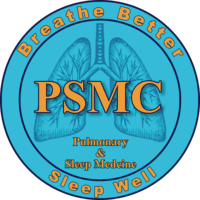Pulmonary care requires precision and expertise, especially when managing respiratory conditions that require supplemental oxygen or medical air. Medical professionals must ensure that patients receive the right balance of oxygen and air to avoid complications. This is where humidified medical air plays a crucial role, particularly in maintaining patient comfort and preventing airway dryness.
Understanding the application of medical air in respiratory therapy is essential for healthcare providers. In this article, we explore the significance of humidified medical air, when it should be used, and what percentage of oxygen requires its application.
What is Humidified Medical Air?
Humidified medical air is a specially conditioned gas mixture that combines oxygen with controlled levels of humidity. This air helps in preventing dryness and irritation in the respiratory tract, particularly in patients who require long-term oxygen therapy. Unlike regular oxygen therapy, humidified air ensures that the airways remain moist, reducing discomfort and improving overall respiratory function.
It is commonly used in intensive care units (ICUs), emergency departments, and respiratory therapy settings where patients may require prolonged oxygen administration. When considering its application, an important question arises: apply humidified medical air when 02 is what percent? This depends on the patient’s oxygen needs and specific medical conditions.
When Should Humidified Medical Air Be Used?
Humidified medical air is typically used in the following scenarios:
- Patients on high-flow oxygen therapy: When oxygen is administered at a high flow rate, the airways can become dry and irritated. Humidification helps mitigate these effects.
- Ventilated patients: Those on mechanical ventilation often require humidified air to maintain normal airway function.
- Patients with chronic lung conditions: Individuals with conditions like COPD or pulmonary fibrosis may benefit from humidified air to ease breathing and reduce mucus buildup.
- Neonatal and pediatric care: Infants and young children with respiratory distress require humidified air to support lung function and prevent irritation.
Medical guidelines recommend apply humidified medical air when 02 is what percent, as it ensures patients receive optimal oxygenation without causing dryness in the respiratory system. Properly humidified air helps maintain mucus membrane integrity, reduces infection risks, and improves overall patient comfort.
The Importance of Oxygen Therapy Management
Oxygen therapy is an essential component of respiratory treatment. However, administering too much oxygen or delivering dry air can lead to complications. Healthcare professionals must assess the patient’s oxygen saturation levels to determine the right percentage of oxygen needed and whether humidification is required.
Studies have shown that humidified medical air reduces inflammation in the airways, making it a crucial element in respiratory therapy. Additionally, it helps in clearing mucus more effectively, which is beneficial for patients with chronic lung diseases.
Risks of Using Non-Humidified Oxygen
When oxygen is delivered without proper humidification, patients may experience:
- Dryness and discomfort – The nasal passages and throat can become dry, leading to irritation and potential nosebleeds.
- Increased mucus viscosity – Thickened mucus can be difficult to clear, leading to breathing difficulties.
- Airway inflammation – Dry air can cause inflammation in the respiratory tract, worsening existing conditions.
To avoid these issues, healthcare providers should carefully monitor oxygen therapy settings and use humidified medical air when appropriate.
How to Ensure Proper Oxygen and Medical Air Administration
Medical professionals should follow these best practices when administering humidified medical air:
- Monitor oxygen saturation levels – Use pulse oximetry to determine the patient’s oxygen needs accurately.
- Use appropriate humidification devices – Heated humidifiers and bubble humidifiers are commonly used in hospital settings.
- Adjust settings based on patient condition – Not all patients require humidified air; it should be used based on clinical indications.
- Educate patients on home oxygen therapy – Those using oxygen therapy at home should understand the benefits of humidification and when to use it.
Seeking Expert Pulmonary Care
For patients experiencing chronic respiratory issues, seeking expert pulmonary care is essential. At Interstate Pulmonary, specialists provide comprehensive respiratory treatments, including oxygen therapy management and lung disease consultations.
Whether you or a loved one require pulmonary care, expert guidance can make a significant difference in managing respiratory conditions. If you have any concerns about oxygen therapy or humidified medical air, it’s best to consult with a pulmonary specialist.
Get Professional Pulmonary Support
If you need expert advice on oxygen therapy, lung conditions, or any other respiratory concerns, reach out to Interstate Pulmonary for a consultation. Their team of experienced specialists is dedicated to providing high-quality care for better lung health.
Final Thoughts
Understanding the importance of humidified medical air in respiratory therapy ensures better patient outcomes. By preventing dryness, reducing airway irritation, and improving oxygen therapy effectiveness, humidified air plays a vital role in pulmonary care. Healthcare professionals must assess oxygen needs accurately and implement the right strategies for each patient’s condition. For those seeking expert pulmonary care, Interstate Pulmonary offers tailored treatment plans to improve respiratory health. Consulting a specialist can help determine the best approach for managing lung conditions effectively.



